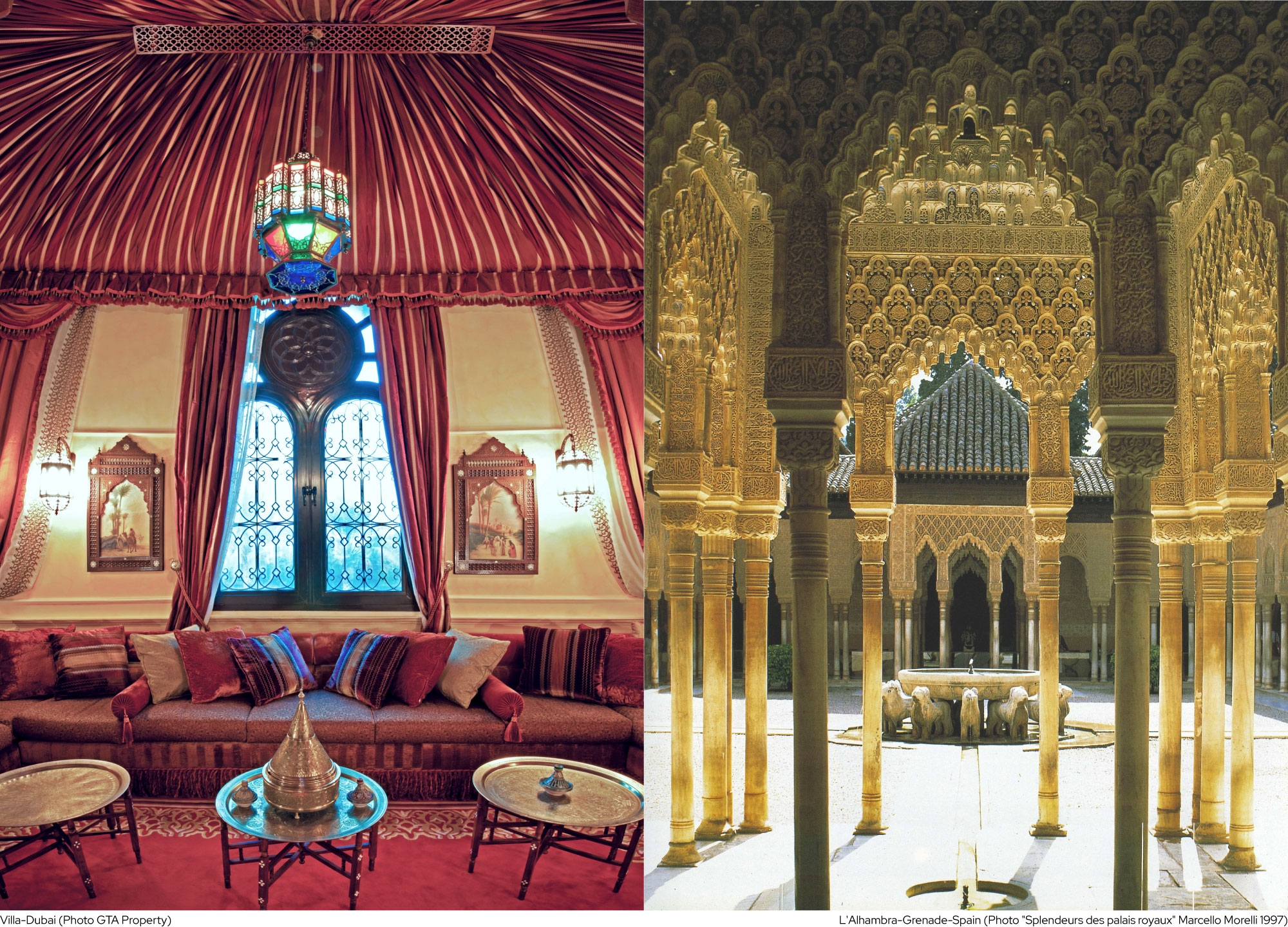Contemporaneo
The contemporary style is easily recognizable for the elegant, polychromatic finishes that go from white to black, which never lose their charm, or very bold colors also combined in sharp and strong contrasts. The main features are its simple, clean lines, which are inspired by all forms of geometry and where the decorations, typical of a rather classic style, are banned and are inspired by a simple but highly visual effect design. Contemporary furniture explores the new frontiers of design with cutting-edge, ergonomic and exclusive solutions, in which even the most innovative materials play a key role, becoming themselves the absolute protagonists of the environments, up to the present day.
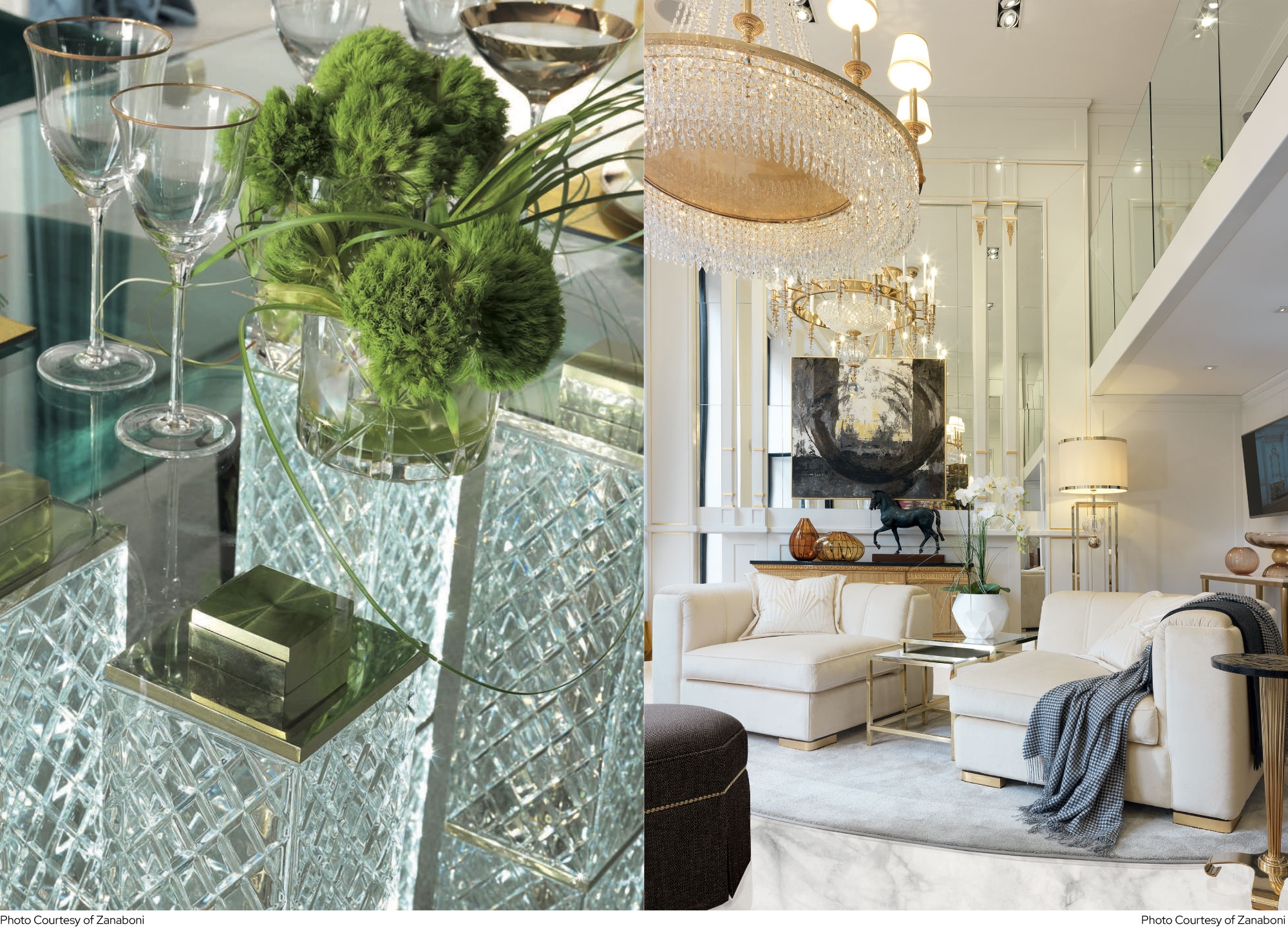
Provenzale - Shabby Chic
The Provencal style is characterized by colors, materials and atmospheres that recall, as its name indicates, Provence with its refined elegance, its colorful lavender fields and its unmistakable rustic but chic spirit. The Provencal-style furniture favors aged-looking furniture: recovered and repainted or treated with the decapé technique. A Provencal-style wardrobe, for example, will be perfect if the grain of the wood it is made of as well as its imperfections are highlighted. In this sense, sideboards and chests of drawers are ideal furniture to be placed in the home with a prominent place and with the possibility of enhancing their rustic appearance thanks to the combination of fresh flowers and wicker, copper, cotton and linen accessories. In a Provencal bedroom, a refined wrought iron bed cannot be missing while a Provencal-style bathroom revolves around a bathtub with support feet. Inevitable, everywhere, bunches of lavender and scented candles.
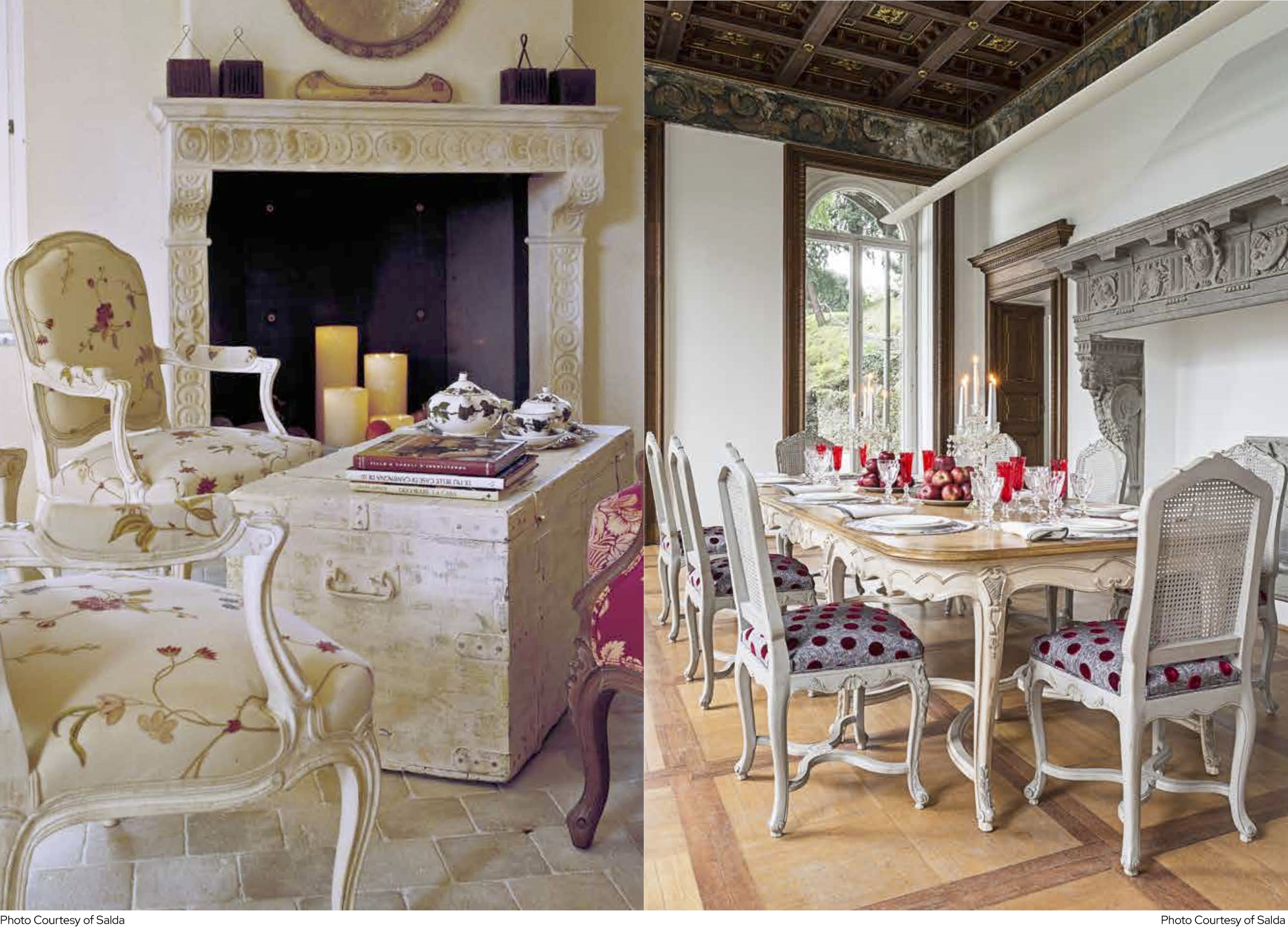
Moderno
Modern furnishings, from 1940 onwards, are distinguished from other styles by the use of synthetic materials and technological surfaces. The minimalism of the shapes make this furniture cold but very elegant and clean in its lines. The modern furniture is characterized by well-defined and clean geometric lines where there is space, however, also for more sinuous and softer lines capable of dampening the sobriety of the environment with a minimum degree of familiarity. The surfaces are smooth and shiny both those of the furniture and those of the floors thanks to which the spaces widen. Space is no longer just something to fill but rather it should be left as free as possible because order can only be obtained thanks to its essentiality, less is more. The modern style would like large rooms furnished with a few elegant and sober furniture and dark colors, obviously including spots of color or extravagant shapes.
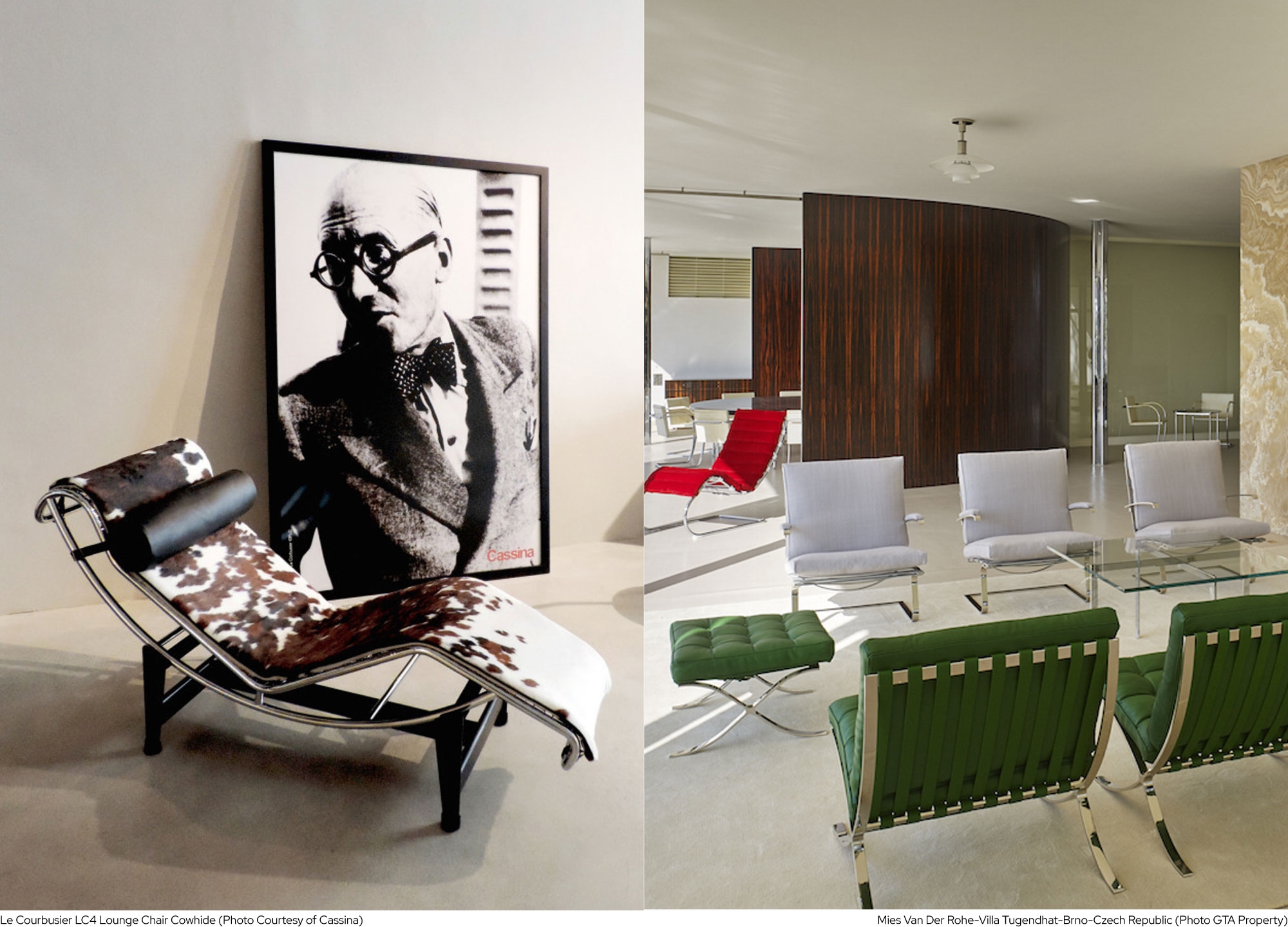
Art deco’
The name of this eclectic style is derived by extreme synthesis from the term International exhibition of modern decorative and industrial arts, held in Paris in 1925. Among other things, Art Deco 'is characterized by the use of materials such as aluminum, stainless steel, lacquer, inlaid wood, shark or zebra skin, with massive use of zigzag or checkered shapes, and vast curves, 'V' and sun rays motifs. This style is characterized by female figures with flowing hair and a slender body, greyhounds, bubbling fountains, deer, stars and luxuriant bunches of grapes. The decorations are stylized and inserted inlaid on precious woods such as ebony, mahogany and rosewood. Emile-Jacques Ruhlmann, one of the greatest exponents of the style, draws on modules of evident Empire lexicon. Also peculiar in the Art Deco is the symmetrically available module, the search to experiment with prestigious materials (fine woods, marble, gold) and the orientation intended to simplify the forms.
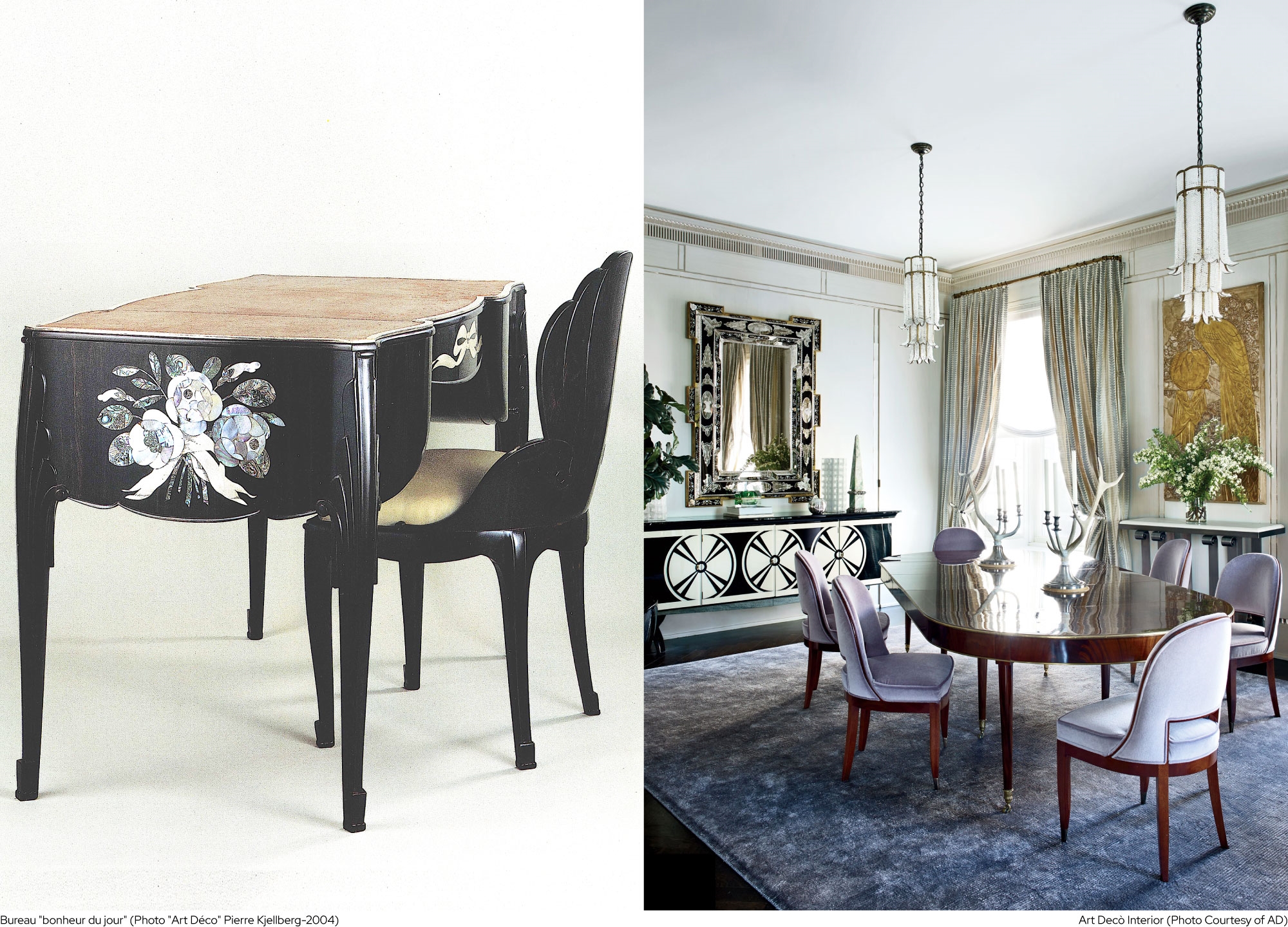
Liberty - Art Nouveau
The name Liberty refers to a vast artistic movement which, between the end of the 1800s and the beginning of the 1900s, mainly concerned architecture and applied arts. Originally born in Belgium, thanks to the architect V. Horta and H. Van De Velde, Liberty soon spread throughout Europe, quickly becoming the style of the new rising bourgeoisie. The phenomenon took different names according to the countries in which it arose: in France it took the name of "Art Noveau" with E. Gallé, in Germany the name of "Jugendstil" with J. Hoffmann, in Austria it was called "Secession" with O Wagner and JM Olbrich, in Spain "Modernism" with A. Gaudì, in Great Britain and Scotland "modern style" with H. Guimard and C.R. Mackintosh. In Italy it initially had the name "Floreale", to then assume the more well-known name "Liberty". Liberty was born from the rejection of the historical styles of the past which in the architecture of those years provided the elements of design morphology and decorative elegance. Liberty instead sought inspiration in nature and plant forms, creating a new style, totally original compared to those then in vogue. In fact, floral motifs appear, tangled tendrils, stylized bouquets, leaves, buds, elegant and sinuous animals such as greyhound, butterfly and dragonfly.
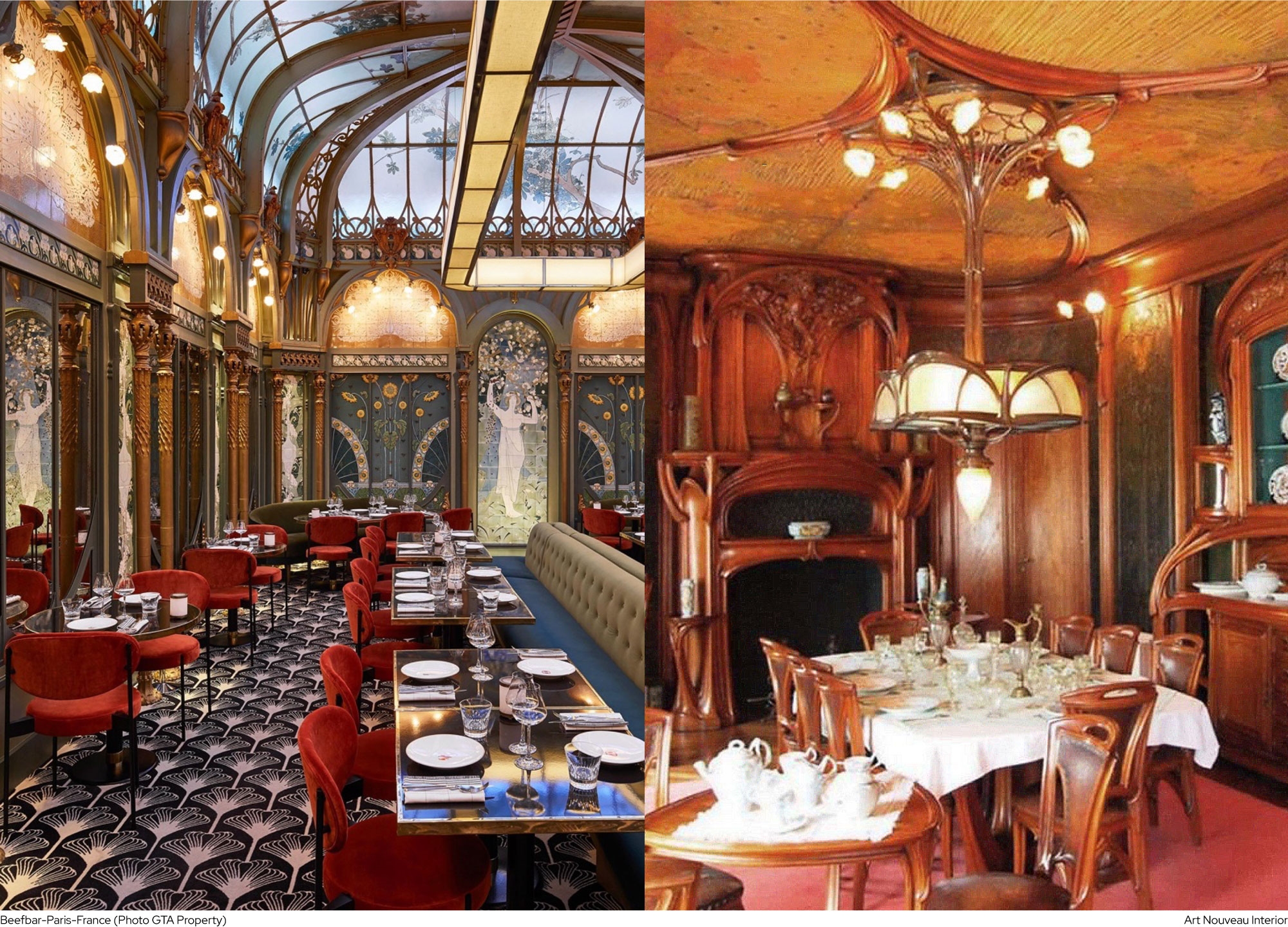
Vittoriano
The term Victorian architecture refers to one of the predominant architectural styles used during the Victorian era, referring roughly to the duration of Queen Victoria's reign (1837 - 1901), from which it took its name. A house furnished with this taste far prefers an orderly and clean environment, with great dedication and attention to detail, but also in a certain sense "whimsical" and a little over the top, we think, for example, of the presence of trinkets ceramic ornaments and figurines. The furniture finished in wood is reminiscent of nineteenth-century residences, better with a marble top, a material also used in the flooring to give elegance and class to the environment very popular in the homes of nobles once upon a time. In addition, there must be precious tapestries that adorn the walls, important Persian rugs, typical of that era, in particular for the richest and most exclusive villas.
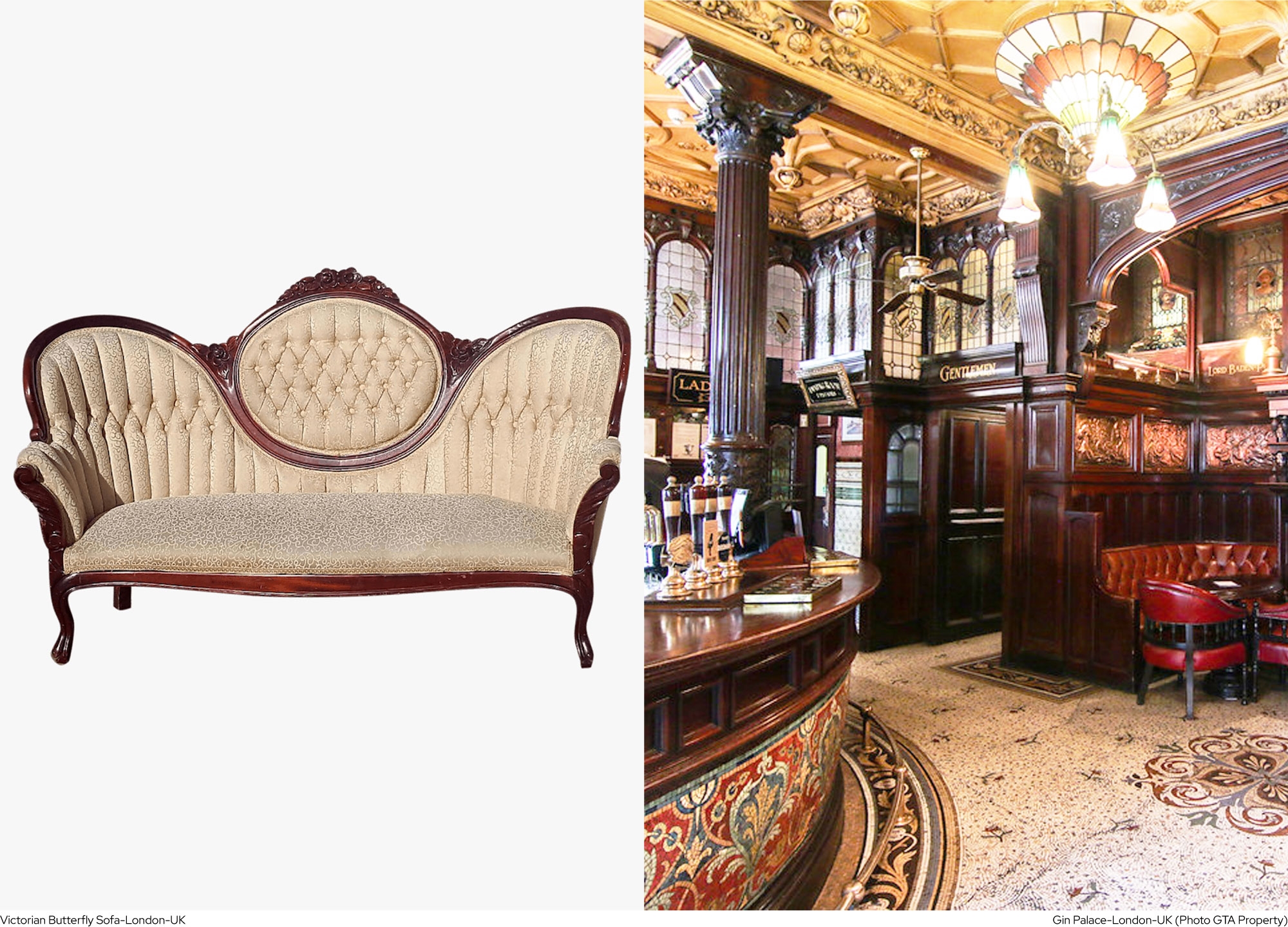
Luigi Filippo - Secondo Impero
The two styles are named after the French king Louis Philippe and the successor Napoleon III, who ruled until 1870. In this case, the Louis Philippe style goes from 1830 to 1848, while the Second Empire goes from 1848 to 1870. Industrialization causes an impoverishment of the decoration: a certain coldness shines through from these pieces. The molding is almost non-existent, the panels are flat and without movement, the straight and smooth uprights are devoid of decorations and their softened corners. The decorative motifs are not numerous: slightly carved fillets underline the volutes and the crossings. The leaf with large petals, the palmettes are found carved on the armrests or on the feet of the tables. The "frog leg" motif is very characteristic, as is the "tulip" frame. Dark and exotic woods are used, such as mahogany and ebony, on which decorations in bronze, mother of pearl and enamel are applied. For beds, the use of wrought iron or brass is frequent. The lines give way back to the curves, but the use of gold disappears almost entirely.
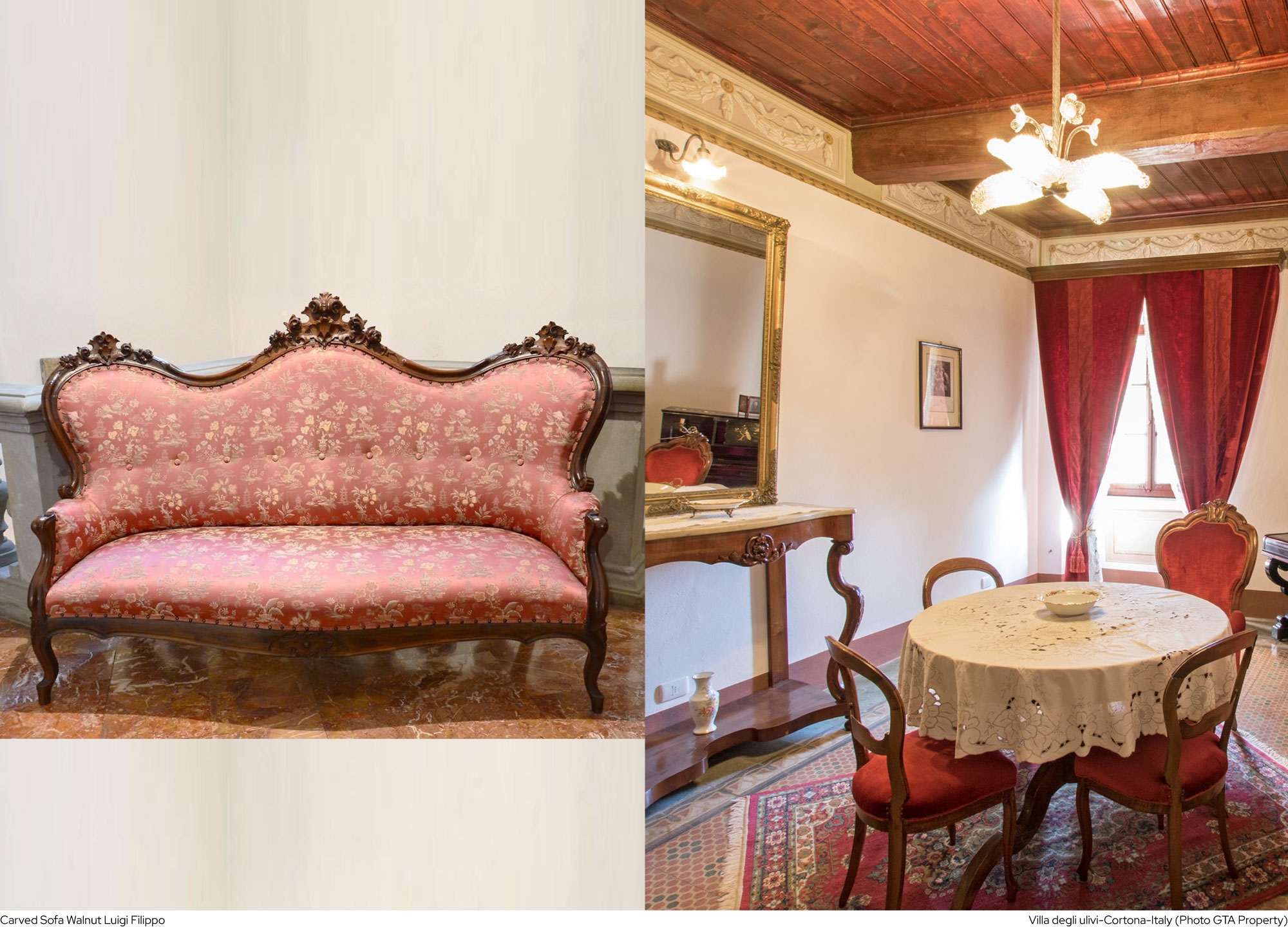
Biedermeier
The style was born in Austria in 1815 and lasts until 1848. The style of furniture becomes practical and functional, responding to a simple and unpretentious taste with curvilinear forms and overall a strong geometric stylization. The custom of adopting, instead of worked fabrics, the wallpaper to decorate the walls and for the construction of the furniture, pear, beech and cherry wood are preferred. The first compound furniture appears, such as sofas with drawers, glass wardrobes, mirror shelves. The carving is also frequent, which is often followed by pleasant effects that are obtained by combining woods with different, more or less polished surfaces. Tables with a round or oval top were particularly widespread, supported by a single central foot carriage, the chairs adopt more contained measures, while always showing a clear prevalence of curved and ornate lines often resolved with twisted columns. The sofa acquires a prevalent function in Biedermeier furniture, has an arched backrest and in some ways preludes forms that will be seen later in the production of the Art Nouveau era.
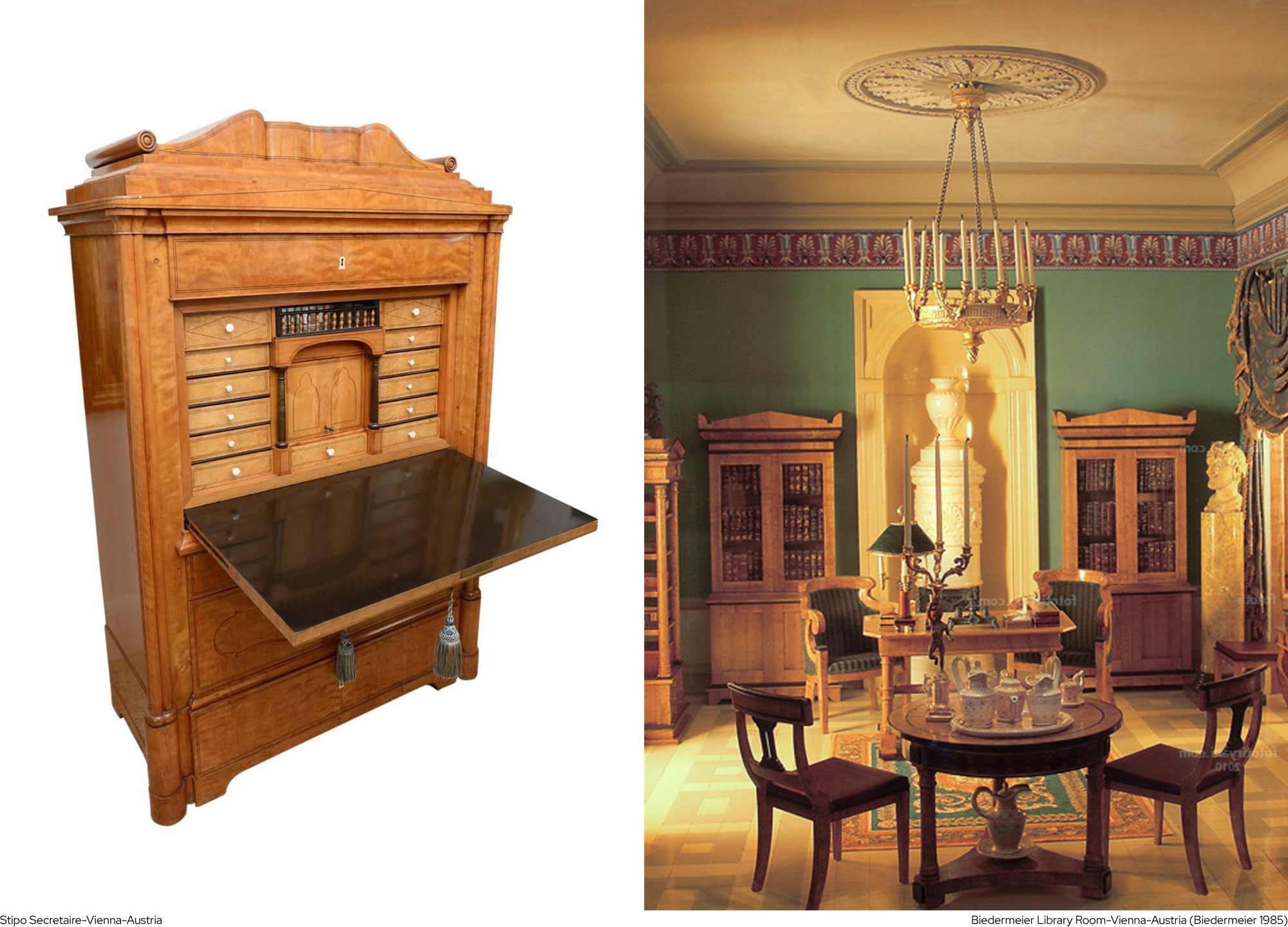
Impero
The empire style spread to Europe following Napoleon's military incursions. The furniture is solid and majestic, and boasts always harmonious and expertly balanced proportions, the spatial metric is strictly linear and symmetrical. The decorations are characterized by winged lions and sphinxes and the wood used is mahogany. In honor of Napoleon, allegorical decorations such as the imperial eagle, the goddess Fortuna, the winged Victory and military symbols are rampant. The throne armchair is back in fashion, with parade needs, richly adorned with carvings and finished with gold leaf. The consoles continue to enjoy unchanged fortune, but narrow and elongated shapes are preferred, and at the same time the new lucky “crescent moon" type is imposed. The "commode" is widespread to accommodate ebonized hemicycle or round columns along the pillars, layered within Doric-style capitals, extend the entire belt with respect to the thread of the lower drawers, and have characteristic banded plinth feet, also called "Elephant's paw", a foot that together with the type "feral paw", "triclinium" or "sphere lapped by eagle claws", will constitute the entire organization chart of the supports of the Empire era. Furniture often has tops in Italian marble or Belgian granite.
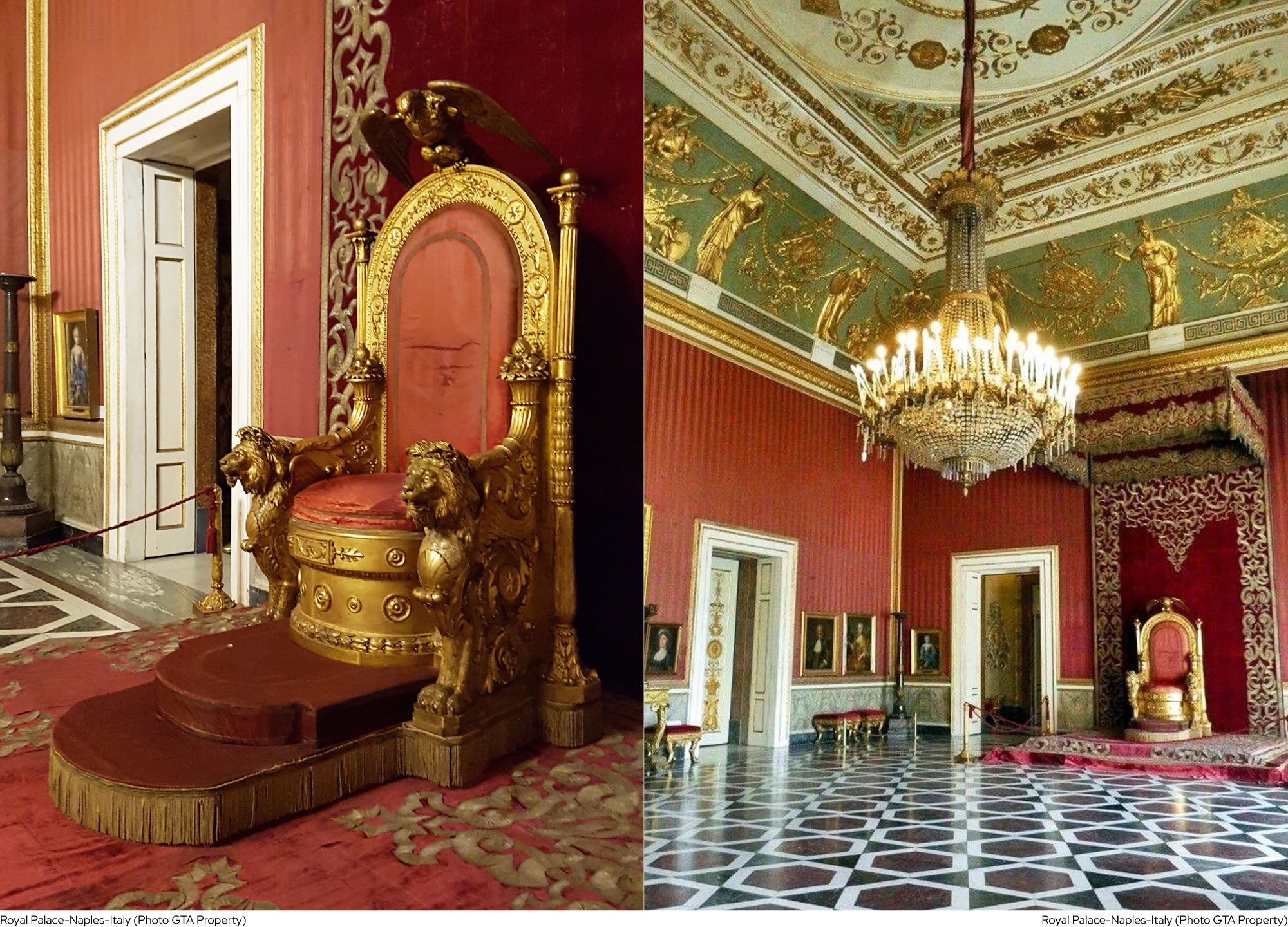
Neoclassico - Luigi XVI
The Neoclassical style of decoration and furnishings developed in the second half of the 18th century, in opposition to the splendor of the Rococò period, and drawing inspiration from Greek and Roman antiquity. In France it takes the name of the reigning Louis XVI. Shapes and motifs that adapt to monumental solemnity characterize the furnishings, as well as the elegance and pleasantness of a decoration that did not give up any comforts. Architecture and cabinet-making are closely linked and the architectural elements are found in the furniture. The previously carved and curved shape and shape disappeared almost completely, replaced by strong vertical and horizontal lines, a delicate construction decorated with contrasting veneers or with paintings with a delicate ivory color. The legs of the neoclassical furniture are long and thin, tapered and with a square section, or in the shape of a cane, with grooves that accentuate their verticality; the moldings and feet took the form of capitals and bases of Greek and Roman columns. The style imposes exotic woods, such as mahogany and ebony; the tops of tables and small tables, chests of drawers and consoles are sometimes covered with marble, but light, preferably Carrara white and Siena yellow. Chairs, sofas and armchairs have tapestries worked in pure silk, embellished with minute decorative elements, such as flowers, festoons, medallions. The colors of the furnishings are preferably white, straw yellow and gold, although also Pompeian red, indigo blue and pale green.
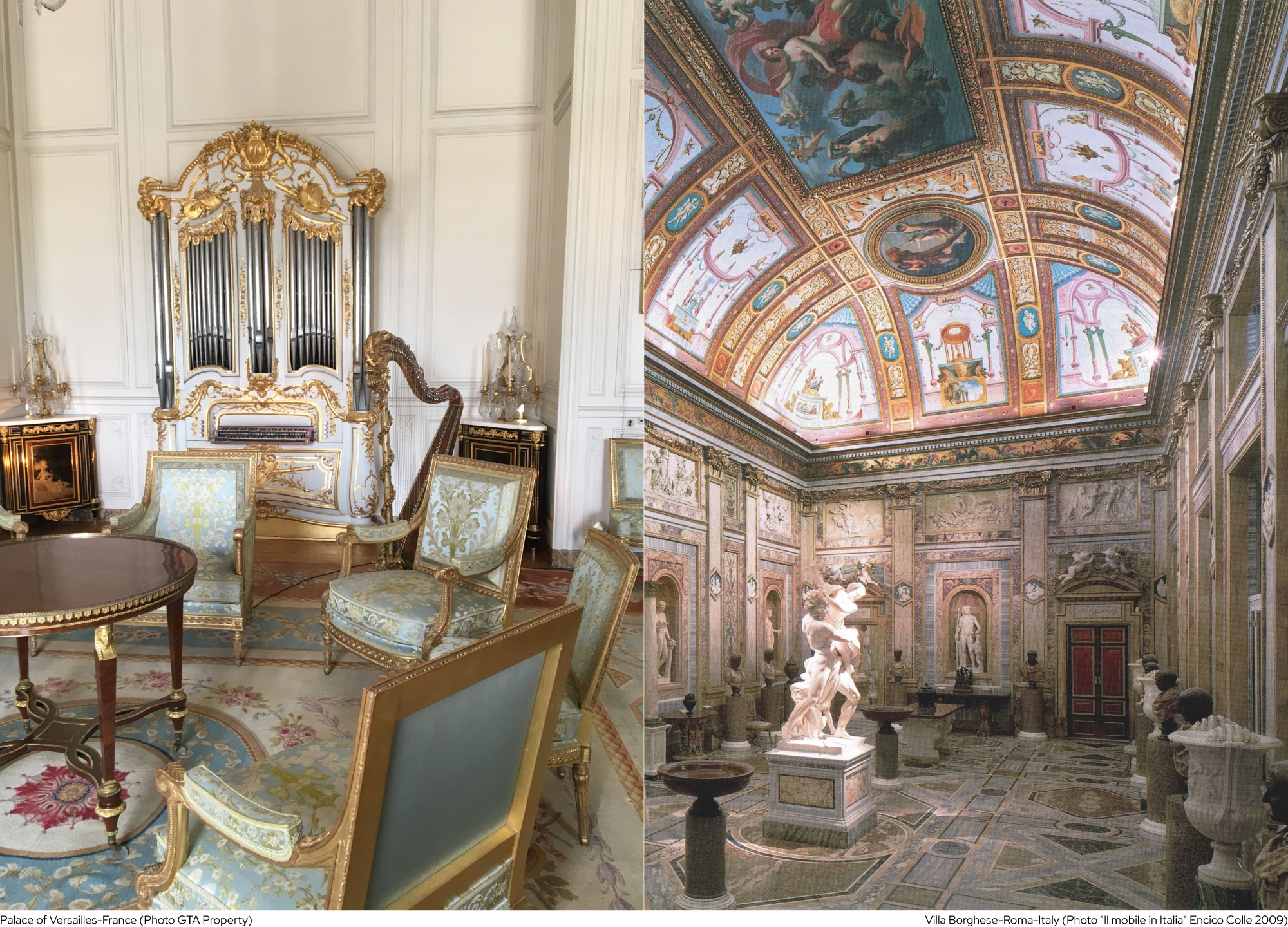
Rococò
During the Regency style, Rococò sprouts, from the French word "rocaille", which indicates a bizarre decorative fashion and weighed down by grotesques, arabesques, stones and shells. The styles that characterized the Rococò period were the Louis XV and the Barocchetto. In particular, it is largely made to coincide with the reign of Louis XV, which took place from 1722 to 1774. The Rococò, which is easily affirmed throughout Europe and England, is a light, refined, elegant and slightly style frivolous, in which the monumental and grandiose form of the Baroque is lost, to take on a new one that softens, rounds and softens. Comfort is increasingly sought, so various types of chairs, armchairs, ottomans and sofas are born, round and light tables, low wardrobes and comfortable corners. The ornamental motifs are mainly taken from the East and among shells and various chinoiseries the shell predominates, hence the name of the rocaille style.
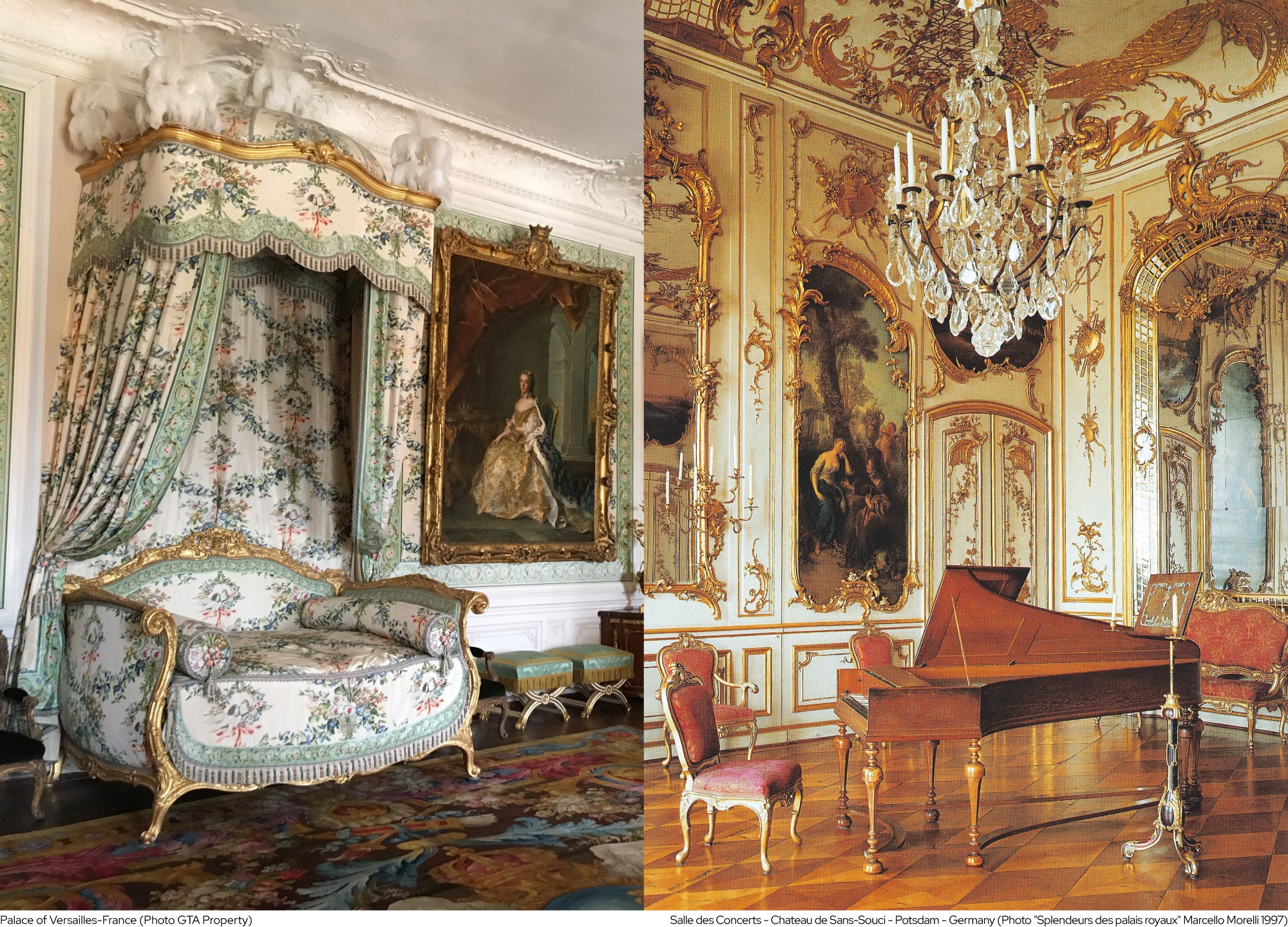
Reggenza
It is a style of passage and research, between 1715 and 1725 approximately, in which the historical and social changes of Louis XV's France are reflected. Taste is eased in favor of a more liberal existential conception. The houses are embellished with furniture no longer solemn but comfortable, in which curved lines and straight lines coexist. Figurative scenes and stylized plant elements are executed on the sides, edges and front of the furniture. The most important novelty in the Regency era is in the new type of "commode" which has now completely been codified in the two-drawer form. The style perfectly follows the neoclassical architecture of the Georgian style, adding a touch of elegance and brightness to the structures. A distinctive feature of the Regency style is found in the facade where the door, usually black in color, is flanked by two columns which sometimes support a small balcony. The balconies are often in wrought iron and the arched windows are an integral part of the style.
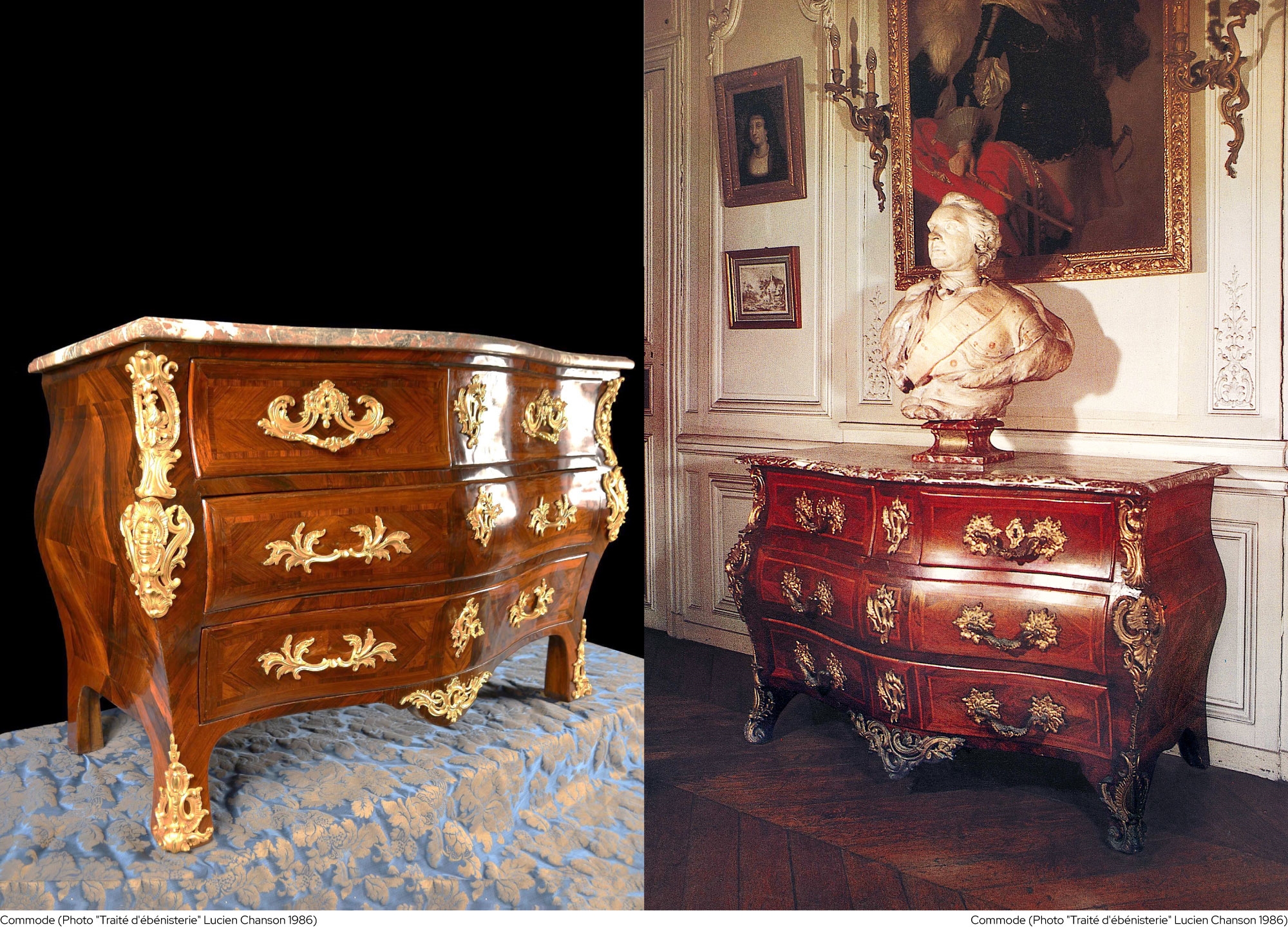
Regina Anna
The Queen Anne style in England identifies the first English Baroque that developed under the reign of Queen Anne of Great Britain, to then be widely taken up between the late nineteenth and early twentieth centuries. In architecture the Queen Anne style harmonizes with less heavy decorations and the use of various terracotta or carved wooden panels, corner towers, all to give the idea almost of the recovery of a more popular and domestic style, others architects developed an elegant version of the style, capturing only the contrast produced by the dark bricks with the use of white stone to highlight corners and windows. Queen Anne furniture is "a little smaller, lighter and more comfortable than its predecessors," and examples of common use include the "cabriole" leg which is the most recognizable element of Queen Anne furniture, the lines curves, arms, ridge rails and pediments, together with contained ornaments (often in the form of a shell) which emphasize the material, such as walnut, a frequently chosen essence.
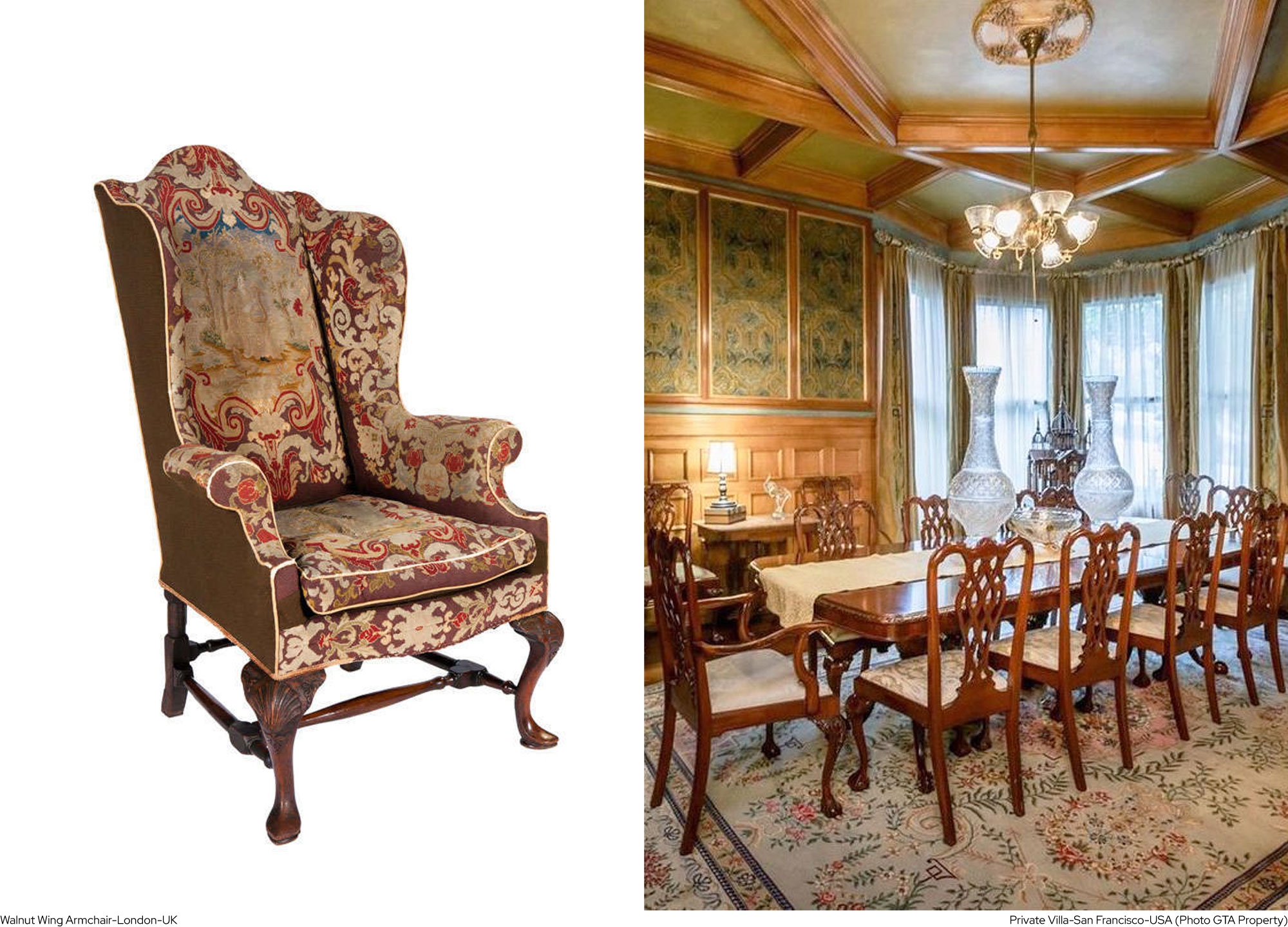
Luigi XIV
The period between the second half of the seventeenth century until around 1715 is permeated by the first great style known as "Louis XIV". The Sun King surrounds himself with cabinet makers and designers who, with their artifacts, enhance the personality of the absolute ruler. In their sumptuous objects, the two crossed "L" and other symbols of the royal house appear. André-Charles Boulle uses the decorative inlay technique, obtained by superimposing two glued sheets of equal thickness, of brass and tortoise, on which the decoration affects. So rich in bronzes and inlays, built on the example of the architectural forms of the time, the Louis XIV style piece of furniture needs a basic structure, made of a compact and resistant wood, such as walnut and oak. Sometimes the furniture is then painted or gilded, sometimes it is instead plated with woods, such as boxwood, almond, sycamore, ebony. Rich in chromatic effects are the Boulle marqueterie processes, an inlay of sheets of horny material (tortoiseshell, mother of pearl, bone) alternating with shaped sheets of brass, or silver, or gilded bronze.
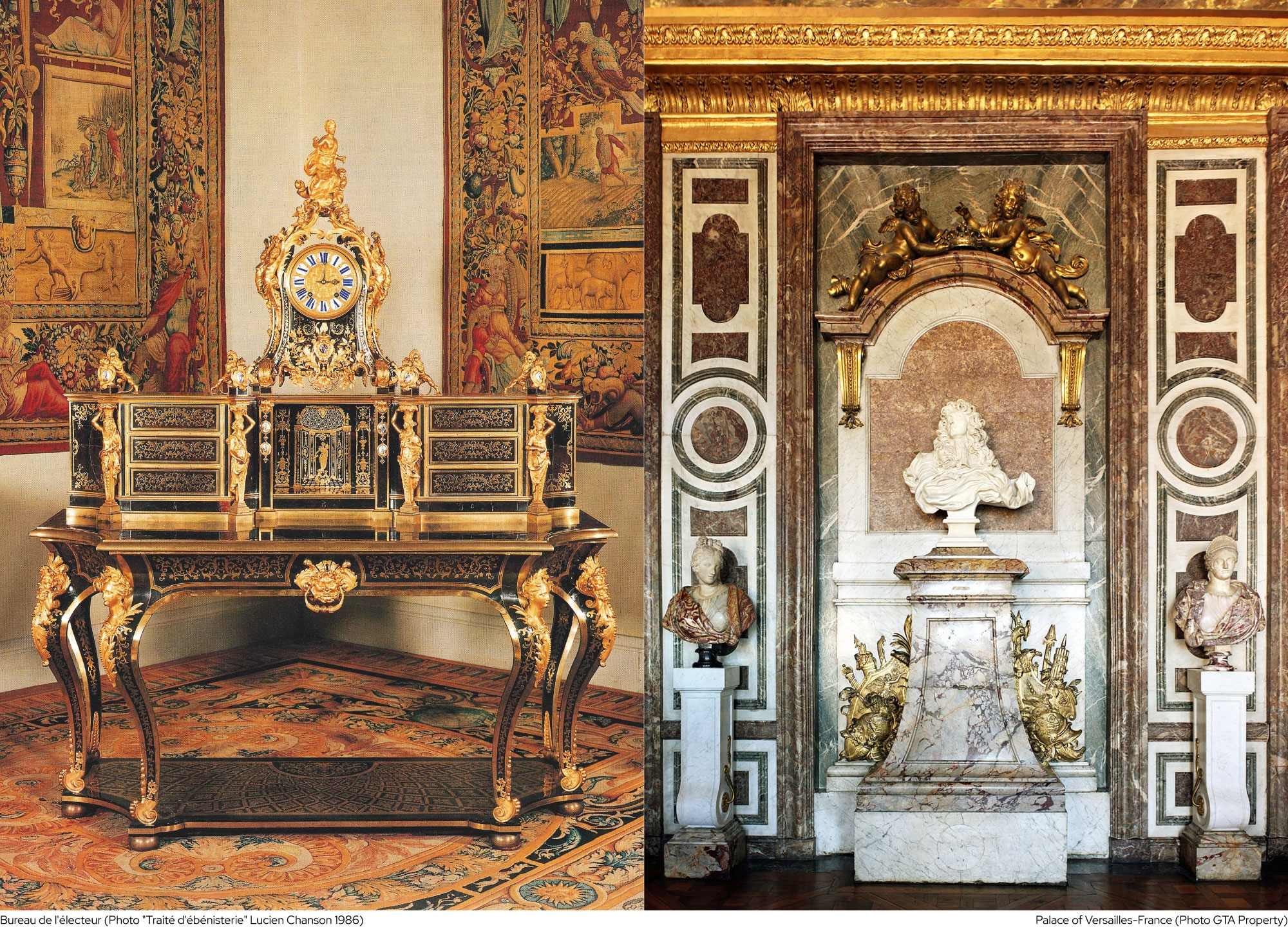
Coloniale
The colonial style is a direct emanation of colonialism and imperialism which, starting from the seventeenth century, has characterized the world's geopolitical scenarios, also spreading the way of building furniture and furnishing houses. Colonial furniture has peculiar characteristics, both from a stylistic and structural point of view. The American colonial houses in fact have wooden finishes and coatings on the walls, on the ceiling and on the floor, and furniture made with the use of hard woods such as walnut, cherry and mahogany. The dominant colors are white, brown, red, yellow and gray. The predominance of wood is associated with an enormous importance given to the upholstery, fabrics, curtains and upholstery of the sofas, but also to artificial lighting, preferring large chandeliers, in glass and metal, the one most used in the original colonial style was pewter, an alloy composed mainly of tin, to which other metals are added, such as copper.
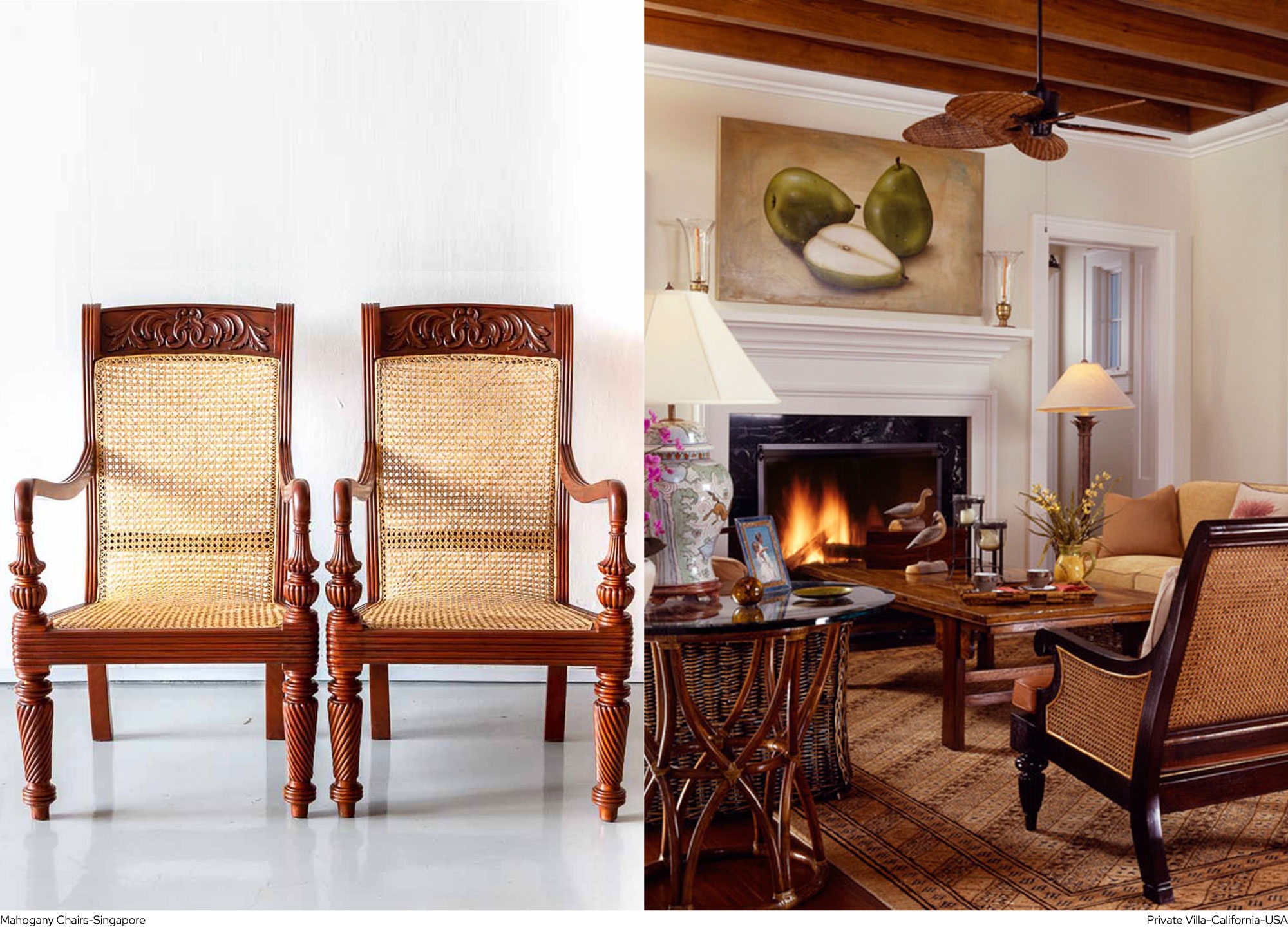
Barocco
The term, from the French "baroque", identifies the artistic current that characterizes the seventeenth century and part of the eighteenth. In Italy the Baroque was born which proposed brand new motifs in architecture that also influenced the art of furniture. The pregnant characteristic of the furniture and the various decorations of the time is given by the movement of architectural masses, with a preference for curved and sinuous lines and display of gilding and precious materials, such as stones or metals, made possible thanks to the use of glue, which allows the setting of decorations in marble, hard stones, ivory, gold and silver that embellish the furniture. Furniture veneered with fine woods also began to appear. In the large halls are inserted the consoles with precious or richly colored marble tops, the immense mirrors, the armchairs, the chairs, the sofas, the tables, all indiscriminately of large proportions. Gold, in this style, is very present.
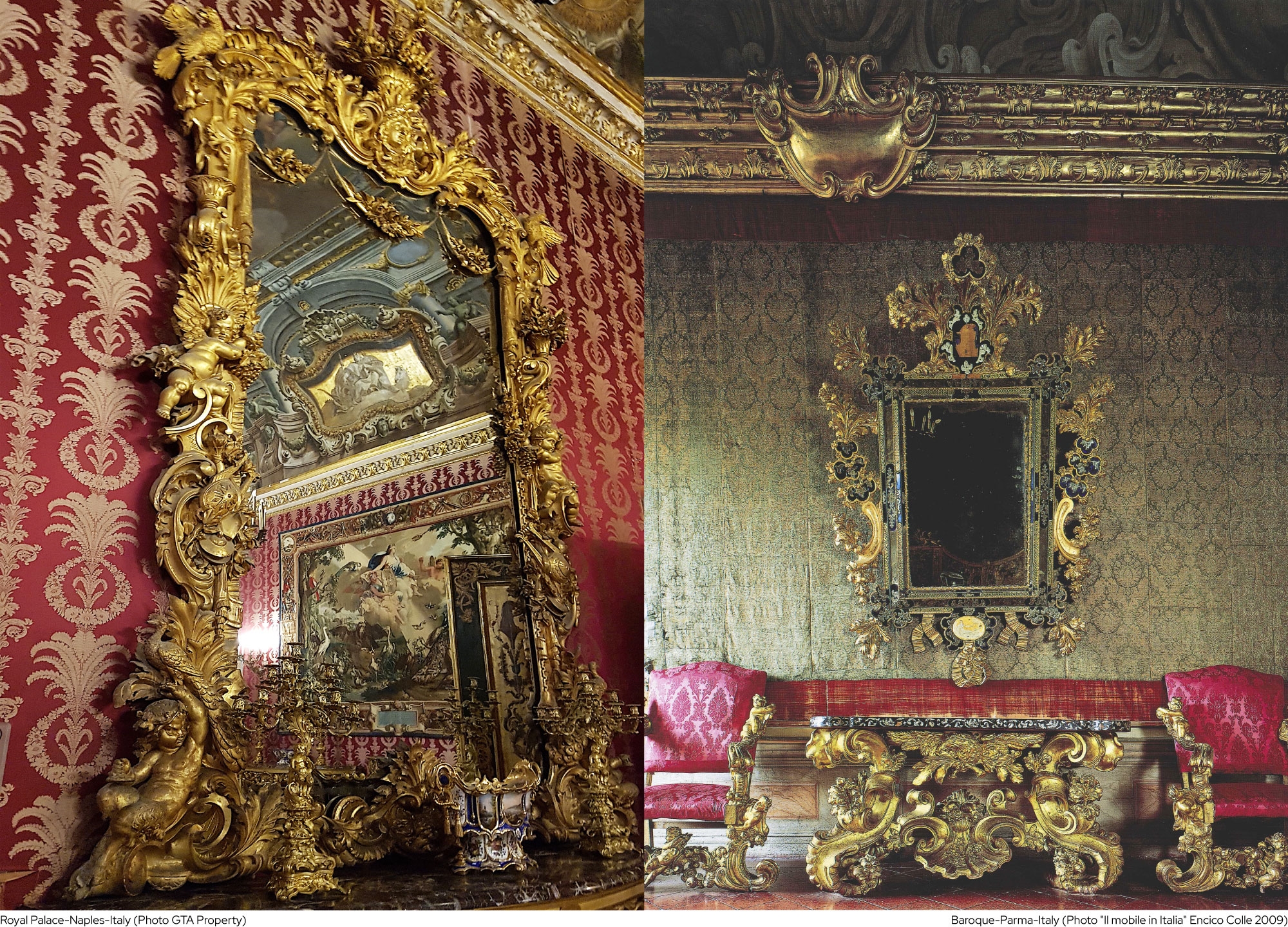
Rinascimento
Born in Italy, in Florence, at the beginning of the fifteenth century; it appears first in Tuscany and then spreads throughout Europe. This style is inspired by classical antiquity. The furnishings are strictly architectural, designed on the same symmetrical foundations of a building. The table is no longer a removable piece of furniture but it is solid, with a robust and well-polished top and with turned legs. Among the various table shapes we must remember the typical “fratino” of the refectories: two simple or turned legs in the shape of a column that hold up a table and are then nailed and fixed with thorns. The early Renaissance (1400-1500) adopts a linear style, the furniture is enriched only by bas-reliefs. In the high Renaissance (1500-1540) the style exalts the harmony between architecture and decoration and the furniture is embellished with the execution of inlays that recall architectural, landscape and naturalistic elements.
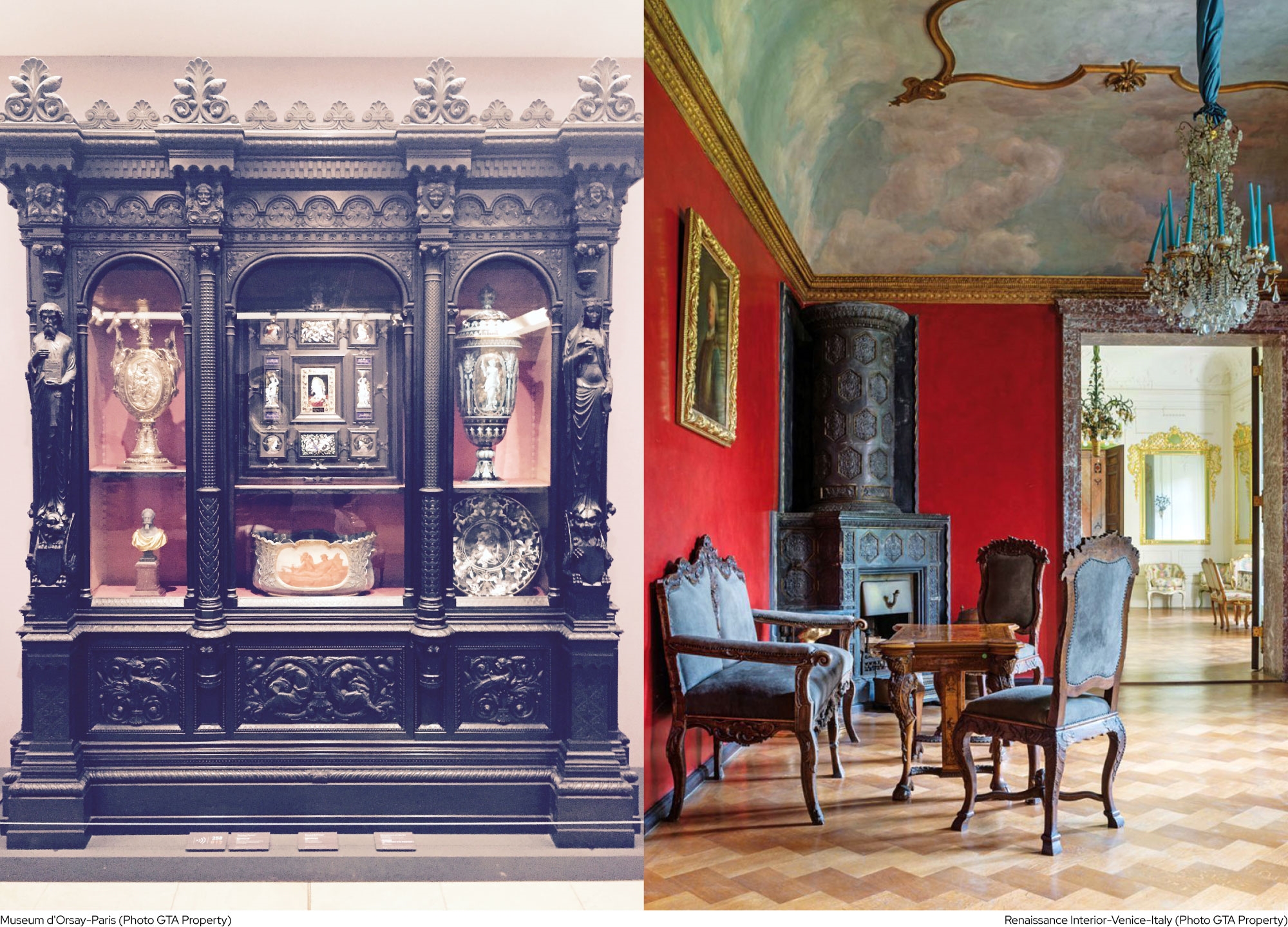
Islamico
Islamic art is essentially the art of beauty, as well as being a means of worship. Arabesque is developed as a universal ornamental style, stylization of plant forms and above all representative of geometric themes and symbols borrowed from calligraphy, but it is in the construction of mosques, that the foundations of Islamic art are better reproduced than elsewhere. In addition to the mosaics, the architectural paintings, the mausoleums, places of worship and power, the production of ceramics, the processing of glass and bronze, the rugs with their artistic themes related to nature are significant and valuable. In architecture, buildings with specific functions, such as mosques or madrasas, are created in very varied forms but often following the same basic geometric pattern. Although there is hardly any art of sculpture, the processing of metal, ivory or ceramic objects frequently achieves great technical perfection.
